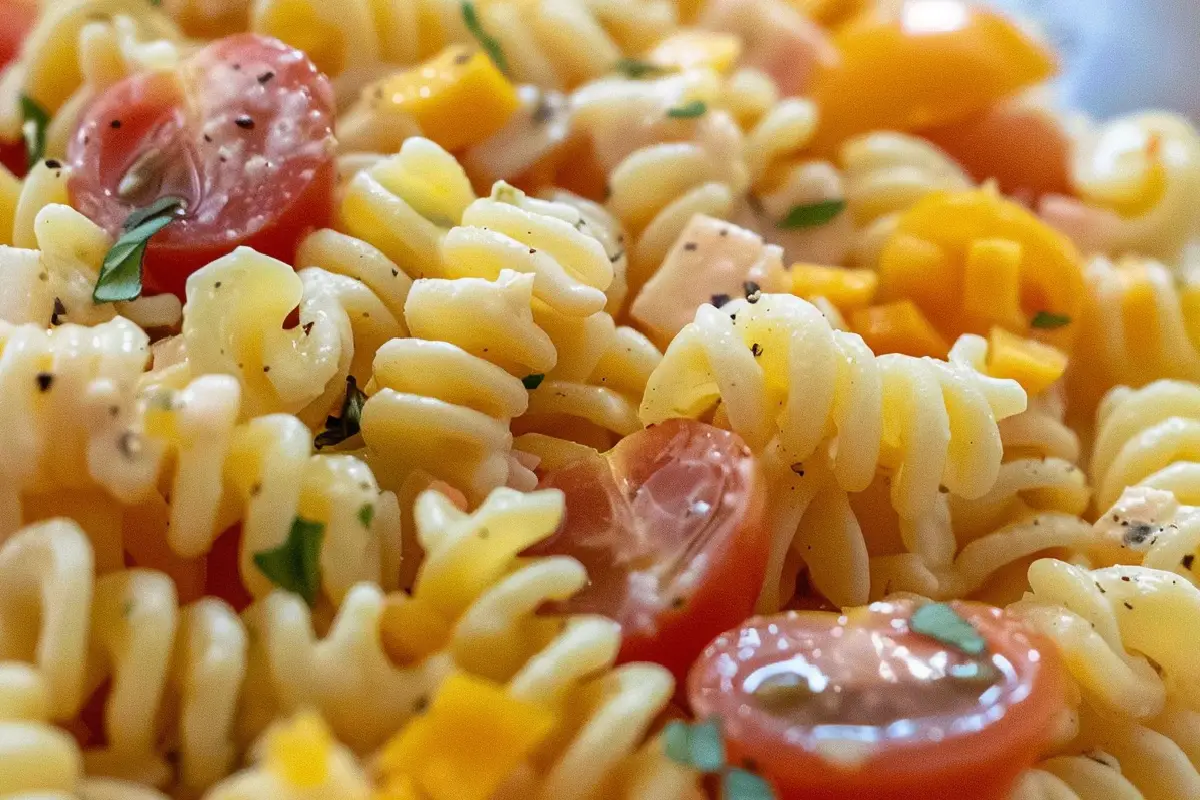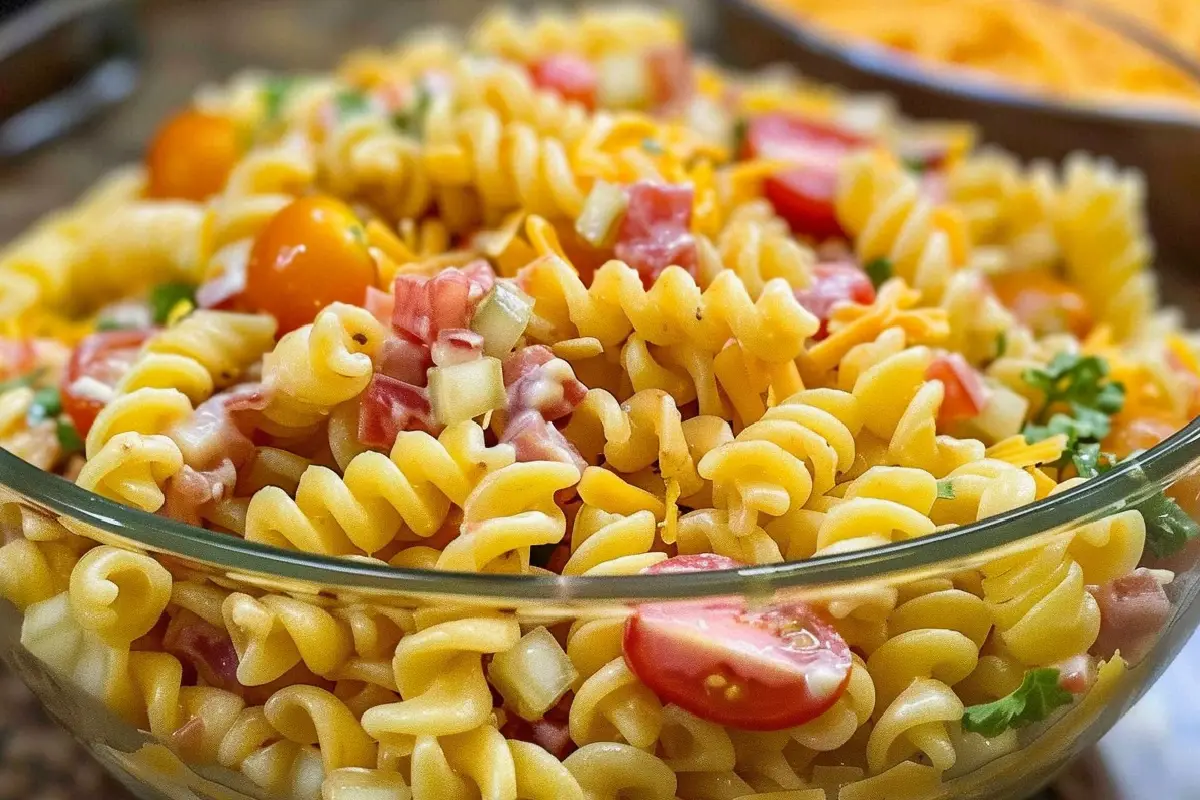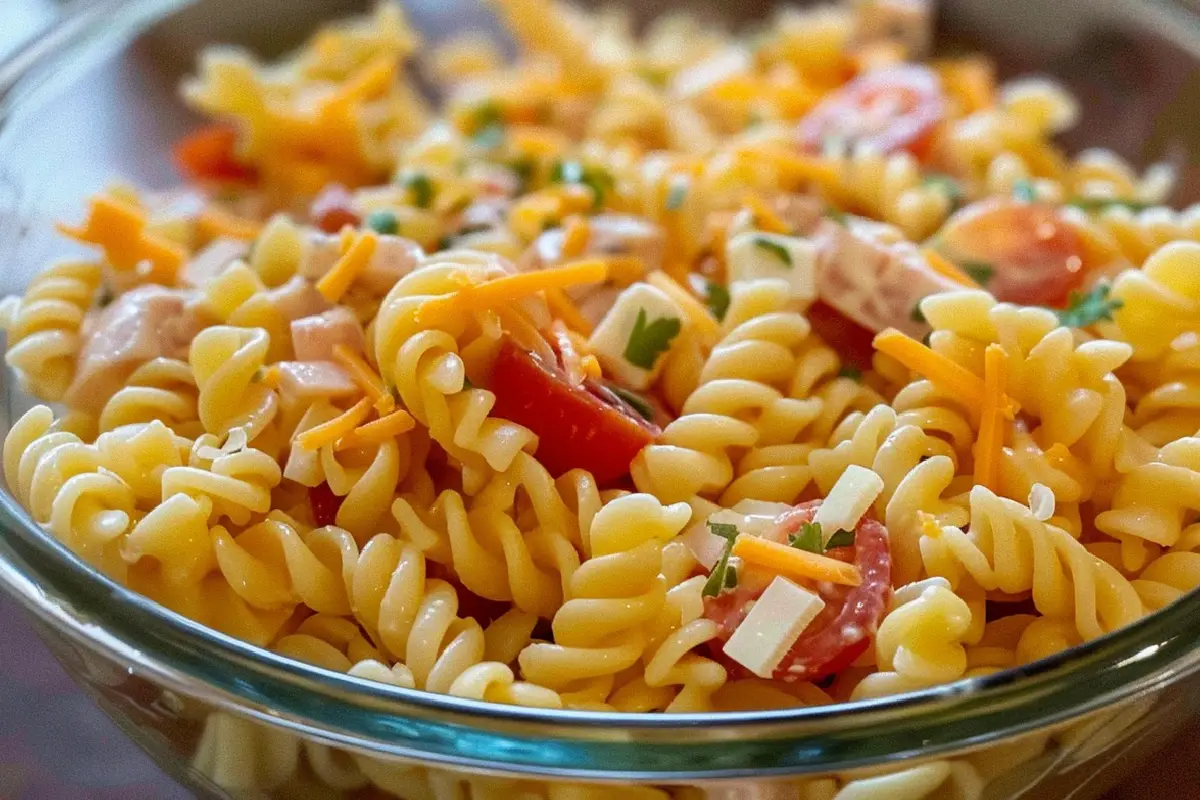Pasta salad is a deliciously versatile dish that combines pasta with a variety of fresh ingredients, making it an ideal choice for picnics, potlucks, barbecues, and even as a light lunch or dinner. It can be served cold or at room temperature, and the possibilities for customization are endless. In this guide, we’ll dive deep into what makes a perfect pasta salad, from selecting the right pasta and dressing to adding vibrant vegetables, proteins, and finishing touches. We’ll also explore the nutritional benefits, pairing ideas, and serving tips to elevate your pasta salad experience.
Base Ingredients
1. Choosing the Right Pasta
The key to a great pasta salad starts with the right pasta. The best types of pasta for salads are ones that can hold onto the dressing and mix-ins well, ensuring that each bite is flavorful. Some of the top choices include:
- Rotini: The spiral shape helps hold onto chunky ingredients like veggies and proteins.
- Farfalle (Bowtie): Its distinctive shape adds a visual appeal and holds up well in vinaigrette-based dressings.
- Penne: Works great in creamy salads due to its tubular structure.
- Orzo: Perfect for a lighter, Mediterranean-style pasta salad.
Cooking Tips
- Always cook pasta al dente to prevent it from becoming mushy. Remember that pasta continues to absorb dressing even after it’s cooked, so slightly undercooking it can help maintain the right texture.
- Rinse cooked pasta with cold water to stop the cooking process and prevent it from sticking together.
2. Dressings: The Flavor Enhancer
The dressing is the second most crucial component of a pasta salad. A good dressing not only ties the ingredients together but also enhances the overall taste profile. There are two primary types of dressings used in pasta salads:
Vinaigrette-Based Dressings
These dressings are lighter and tangier, making them perfect for summer salads. They typically include ingredients like:
- Olive oil
- Vinegar (red wine, balsamic, or apple cider)
- Mustard
- Fresh or dried herbs (e.g., oregano, basil, thyme)
- Lemon juice for an extra zing
For an authentic Mediterranean experience, try using a classic Greek vinaigrette.
Creamy-Based Dressings
Creamy dressings are richer and more indulgent. They often include:
- Mayonnaise or Greek yogurt
- Sour cream
- Ranch or Caesar dressing
- Crème fraîche
This type of dressing pairs well with heartier add-ins like bacon, cheddar cheese, and chicken.
3. Vegetables: Adding Color and Texture

Vegetables are the unsung heroes of pasta salad. They not only add color and texture but also provide a nutritional boost. The best vegetables to use in pasta salads are:
- Bell Peppers: Available in red, yellow, and green for a pop of color.
- Cherry Tomatoes: Sweet and juicy, these add a burst of freshness.
- Cucumbers: Cool and crunchy, they balance the richness of creamy dressings.
- Red Onions: Add a mild, sweet crunch and vibrant color.
- Carrots: Shredded or julienned for a subtle sweetness and texture.
Feel free to add other vegetables like broccoli, zucchini, kale, or even artichokes for more variety.
Tip for Preparing Vegetables
- Dice or chop all vegetables into bite-sized pieces to ensure they are evenly distributed throughout the salad.
- For a more intense flavor, consider roasting or grilling some vegetables like bell peppers and onions before adding them.
Proteins: Transforming Pasta Salad into a Meal
Adding protein turns a pasta salad from a side dish into a complete meal. Here are some options to consider:
- Grilled Chicken: Adds a smoky, savory note that pairs well with both vinaigrettes and creamy dressings.
- Shrimp: Light and fresh, shrimp complements citrusy dressings and herbs.
- Tuna: A classic Mediterranean addition, canned tuna or fresh seared tuna works well with capers, olives, and vinaigrette.
- Hard-Boiled Eggs: Adds richness and pairs well with bacon or ham.
- Beans or Chickpeas: A great plant-based protein option, especially for vegetarian or vegan pasta salads.
For more protein-packed ideas, see the complete guide to incorporating proteins in pasta dishes.
Recipe Idea: Mediterranean Chicken Pasta Salad
Combine grilled chicken, feta cheese, cherry tomatoes, cucumbers, and red onions, then toss with a lemon-herb vinaigrette. This salad is not only filling but also bursting with fresh flavors.
Cheese: Adding Creaminess and Depth
Cheese can elevate a pasta salad by adding a creamy or sharp note. Here are some popular choices:
- Feta: A crumbly Greek cheese that’s slightly salty and pairs well with vinaigrettes.
- Mozzarella: Soft and mild, best used in Italian-inspired salads.
- Cheddar: Sharp and tangy, great for creamy salads with bacon and eggs.
- Parmesan: A hard, nutty cheese that adds a finishing touch to many pasta dishes.
For a lactose-free option, consider dairy-free feta or nutritional yeast.
Herbs and Spices: Elevating the Flavor Profile
Herbs and spices are what set your pasta salad apart from a bland bowl of pasta. Fresh herbs like basil, parsley, and dill add brightness, while spices such as paprika, garlic powder, and black pepper can enhance savory flavors.
- Basil: Adds a sweet, peppery aroma.
- Oregano: Earthy and robust, ideal for Mediterranean salads.
- Dill: Pairs well with creamy dressings and seafood.
For an extra kick, sprinkle in some red pepper flakes or cayenne.
Nuts, Seeds, and Crunchy Additions
Adding a crunchy element to your pasta salad can elevate its texture and make it more satisfying. Consider:
- Toasted Almonds or Pine Nuts: Nutty and aromatic, these work well in pesto-based salads.
- Sunflower Seeds: A crunchy, nut-free option.
- Croutons: Adds an extra layer of texture, especially in Caesar-style salads.
You can also experiment with adding roasted chickpeas or crispy onions for more variety.
Different Regional Variations of Pasta Salad
Pasta salad is a dish that has been adapted across various cuisines, resulting in unique regional variations. Let’s take a look at some popular ones:
Italian Pasta Salad
Italian pasta salad typically features ingredients like:
- Salami or pepperoni
- Mozzarella balls
- Kalamata olives
- Sun-dried tomatoes
- Tossed with a classic Italian vinaigrette.
Pair this salad with an authentic homemade Italian dressing recipe.
Greek Pasta Salad
Greek pasta salad is known for its bright, tangy flavors and includes:
- Feta cheese
- Kalamata olives
- Cucumbers and red onions
- Tossed in a lemon-oregano vinaigrette.
American-Style
Creamy and indulgent, the American version often includes:
- Cheddar cheese cubes
- Bacon bits
- Hard-boiled eggs
- A dressing made from mayonnaise, mustard, and vinegar.
Asian-Inspired Pasta Salad
For a unique twist, try an Asian-inspired pasta salad with:
- Soba noodles or rice noodles
- Edamame beans
- Shredded carrots and cabbage
- Tossed in a sesame-ginger dressing.
Serving Pasta Salad for Different Occasions
Pasta salad is versatile enough to be served in various settings, from casual family dinners to more formal gatherings. Here are some serving ideas:
- Picnics and BBQs: Choose lighter, vinaigrette-based dressings that won’t spoil quickly in the sun.
- Potlucks: Opt for creamy dressings that can hold up for a few hours without refrigeration.
- Lunchbox Meals: Add more vegetables and a lean protein like grilled chicken for a balanced meal.
- Dinner Parties: Serve pasta salad as a side dish with grilled meats or roasted vegetables.
Tip: For an elegant presentation, use a large serving bowl and garnish with fresh herbs or a sprinkle of parmesan.
Nutritional Benefits of Pasta Salad
It can be a nutritious addition to your diet, depending on the ingredients you choose. Here’s a quick breakdown of its nutritional benefits:
- Carbohydrates: Provides energy, especially if you choose whole grain pasta.
- Proteins: From add-ins like chicken, beans, or cheese.
- Vitamins and Minerals: Found in fresh vegetables and herbs.
- Healthy Fats: From olive oil-based dressings and nuts.
For those looking to lower the calorie count, swap out creamy dressings for vinaigrettes and increase the ratio of vegetables to pasta.
FAQs

What is the best pasta shape?
Rotini and fusilli are ideal because their spiral shapes hold dressing and ingredients well.
Can pasta salad be made ahead of time?
Yes, making it a day ahead allows the flavors to meld, making it even tastier.
How long does pasta salad last in the refrigerator?
Properly stored in an airtight container, pasta salad can last up to 3-4 days.
Can pasta salad be frozen?
Freezing isn’t recommended as it changes the texture of both the pasta and the vegetables.
What are some vegan alternatives?
Chickpeas, tofu, and tempeh are great plant-based protein sources. Use vinaigrette dressings to keep it vegan.
Conclusion
Creating the perfect pasta salad is an art that involves balancing flavors, textures, and colors. The key is to start with high-quality ingredients and build upon them with thoughtful combinations. Whether you’re aiming for a light Mediterranean dish with fresh vegetables and a zesty vinaigrette, or a rich, creamy American-style salad with bacon and cheddar, the possibilities are endless. Remember to always taste and adjust as you go—sometimes a pinch of salt, a splash of lemon juice, or a handful of fresh herbs can completely transform your salad from ordinary to extraordinary. Don’t be afraid to experiment with new ingredients and unexpected pairings, like adding roasted vegetables or a sprinkle of toasted nuts, to elevate your pasta salad to new heights.
Lastly, consider the occasion when crafting your pasta salad. For a summer BBQ, choose ingredients that can withstand heat and opt for dressings that won’t spoil easily. For a holiday potluck, try heartier options like smoked meats or rich cheeses. Personalizing your pasta salad means tailoring it to suit your own taste preferences and those of your guests. With the foundational guidelines provided in this guide, you can confidently mix and match ingredients to create a dish that will be the star of any gathering. Whether you’re a beginner or a seasoned cook, pasta salad offers a fun and rewarding opportunity to express your culinary creativity and enjoy a dish that’s as versatile as it is delicious.

